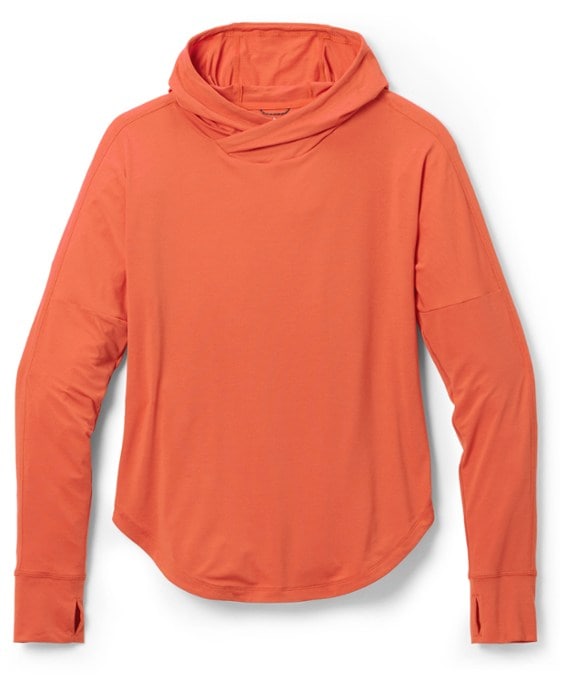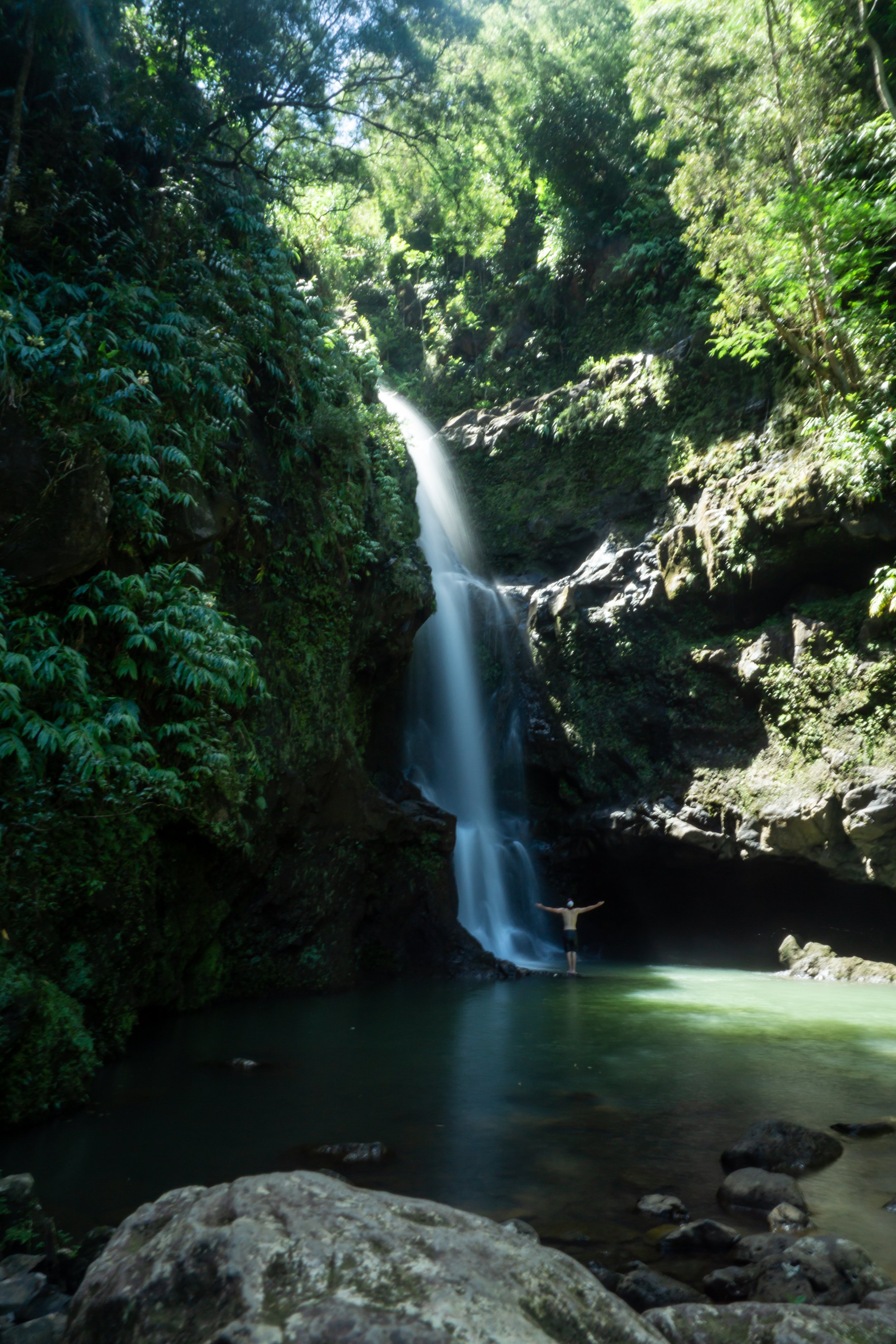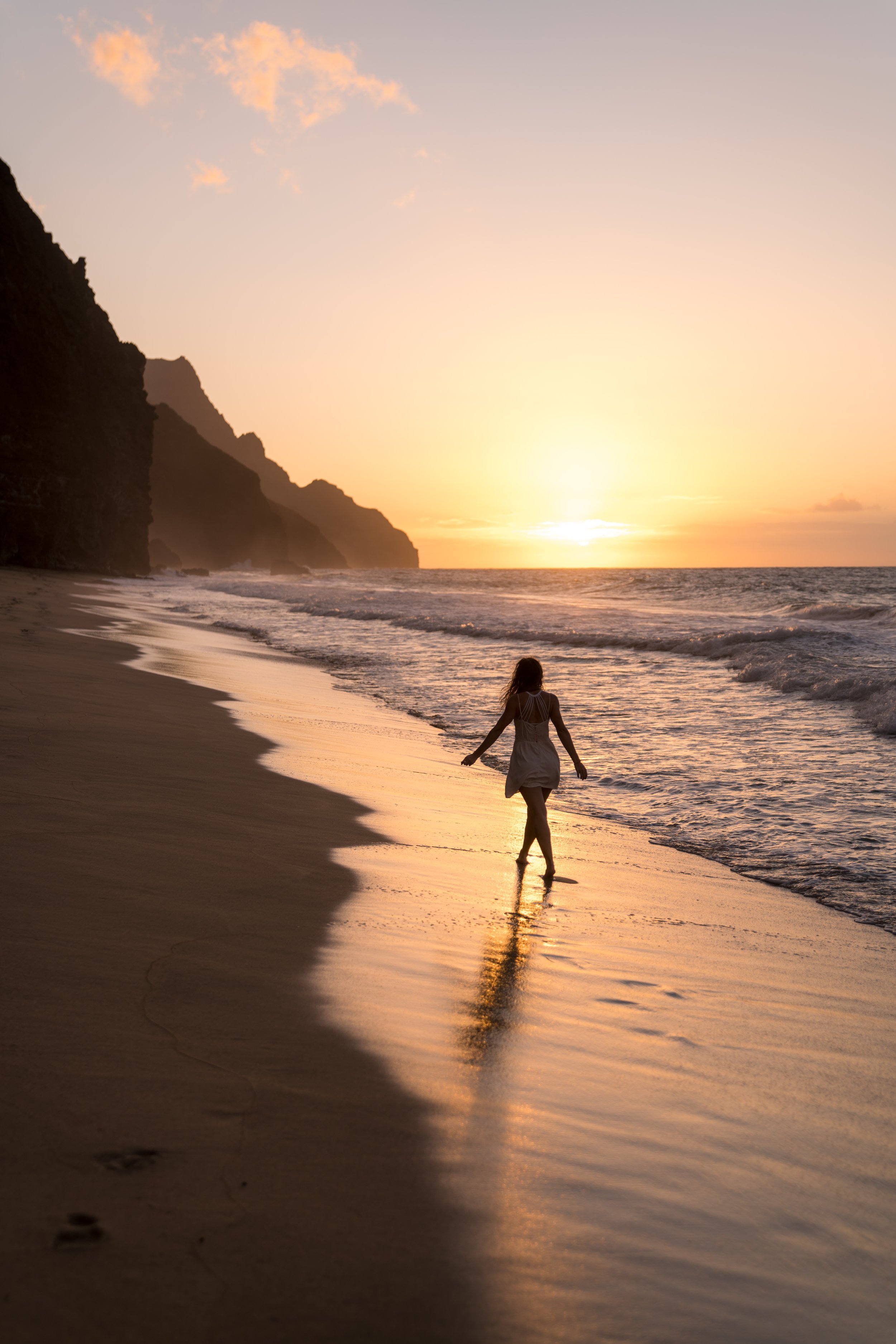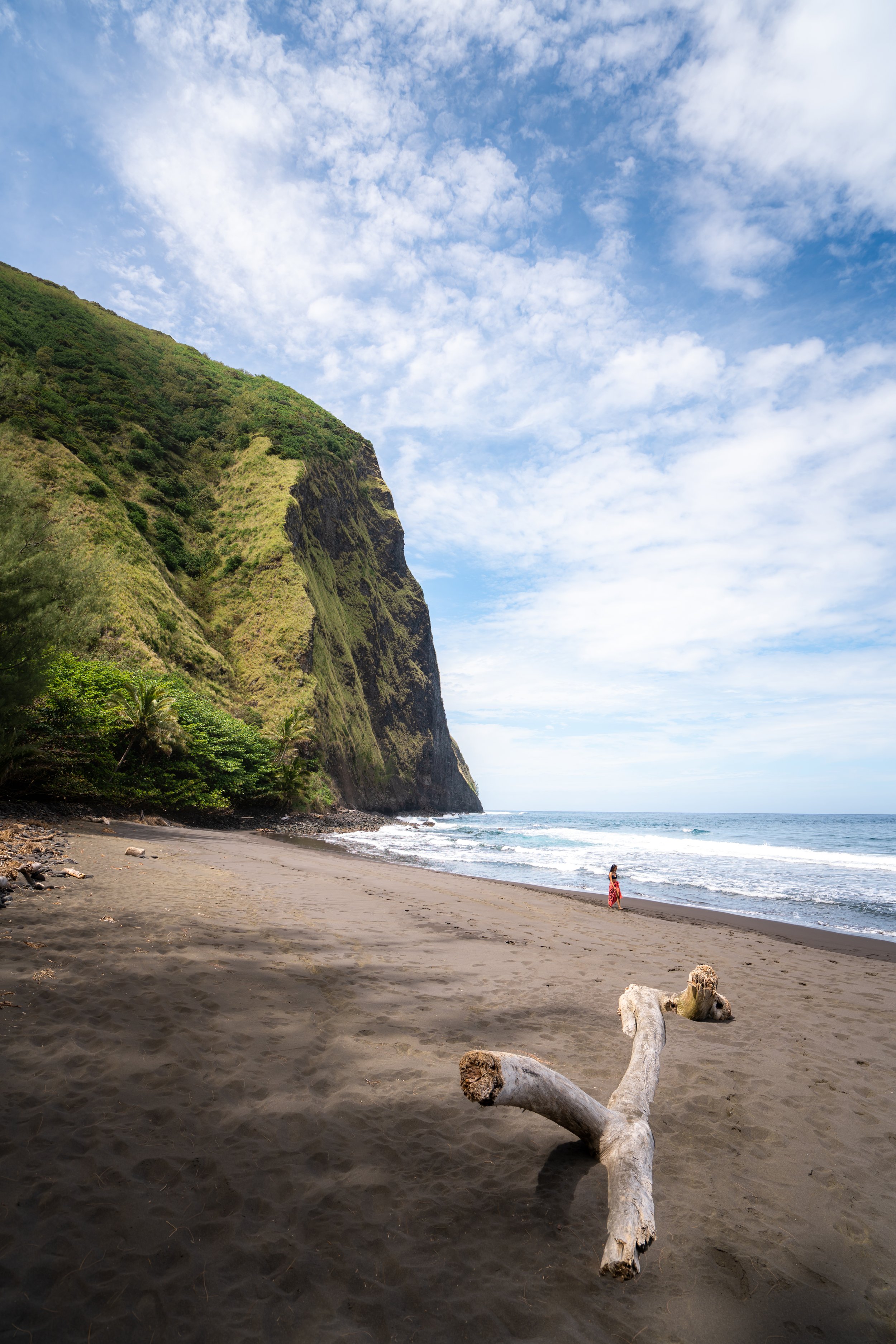Hiking the Waiapaʻa Trail on Lānaʻi, Hawaiʻi
Distance: 6.2 miles / 10.0 km
The Waiapaʻa Trail on Lānaʻi is one of the island’s Bench Land trails, meaning the majority of the hike traverses Lānaʻi’s foothills below the Lānaihale and the Munro Trail, much like the Hiʻi Trail just to the north.
However, the Waiapaʻa Trail is much less traveled in comparison to the Hiʻi Trail, as the Hiʻi Heiau is one of the biggest attractions on the Hiʻi Loop.
This is why, whether you hike, bike, or trail-run the Waiapaʻa Trail, you’re almost always guaranteed to have the entire hike to yourself, making it a great adventure for those interested in exploring a very quiet, secluded part of Lānaʻi.
Waiapaʻa Trailhead Parking
Parking for the Waiapaʻa Trail is located directly off Mānele Road, about 1.4 miles (2.3 km) south from the beginning of the highway in Lānaʻi City.
Google Maps Directions: Waiapaʻa Trailhead
My Hawaiʻi Hiking Checklist
Osprey 3L Water Bladder - The Osprey 3L water bladder is the most universal hiking and backpacking water bladder on the market, and it’s my go-to because of the slide-off seal that allows it to be quickly filled from the top. Additionally, individual parts are easily replaceable, such as the bite valve.
Blister / Heel Protectors - I swear by these cheap, amazing heel protectors to prevent blisters for nearly every kind of hiking and backpacking that I do!
Black Diamond Headlamp - Personally, I recommend the Black Diamond Storm because it is one of the brightest, lightest, and longest-lasting headlamps on the market—and trust me, the weight-to-battery-life ratio really does matter!
Hiking / Trail Running Shoes - Depending on the type of trail, I prefer to use either the Keen Targhee for longer, more rugged hiking or the HOKA Zinal Trail-Running Shoe for lighter, less intense trails. In either case, both have been amazing to me for many years across countless environments, and both can be found in men’s and women’s sizes. - (Men’s Keen / Women’s Keen) (Men’s HOKA / Women’s HOKA)
Waterproof Rain Shell - You never know when it may rain, and I’ve learned over the years that a rain shell is far better than a rain jacket. By this, I mean that it’s best to have something that the water will roll right off of, which is why I recommend the Patagonia Torrentshell 3L available in both men’s and women’s sizes.
High SPF Sunscreen - Packing high-SPF sunscreen is a must for long days outside!
Hiking the Waiapaʻa Trail
The Waiapaʻa Trail begins on a long, open access road for roughly 0.6 miles (1.0 km) until the hike begins to gain any noticeable elevation on the climb up the Bench Lands.
Compared to the Hiʻi Trail, this beginning flat section is roughly double the distance to reach the start of the incline.
Regarding my thoughts above, a hooded sun shirt can really come in handy on the Waiapaʻa Trail, as there is significantly less shade overall compared to the Hiʻi Trail.
Waiapaʻa-Hiʻi Connector Junction
At this split, past the fence in the photo above, go straight to continue on the fastest route up to the start of the loop.
That said, the trail to the left is the Hiʻi Flats Trail, also referred to as the Pipeline Trail, which connects the Waiapaʻa and Hiʻi Trails together.
Read My Separate Post: Hiʻi Trail
At the top of the short but steep little hill, go right to begin hiking toward Kapōhaku Gulch, heading to the start of the Waiapaʻa Loop Trail.
After the Waiapaʻa Trailhead sign, stay to the right to continue on the correct trail.
These non-native Acacia trees dominate Lānaʻi’s low-elevation Bench Lands, making it quite challenging to find native plants on the Waiapaʻa Trail, unless you know what to look for.
After crossing over Kapōhaku Gulch, the Waiapaʻa Trail begins to climb much more significantly than any section thus far.
ʻUhaloa is one of the few 'common' native Hawaiian plants that can be seen along the Waiapaʻa Trail.
This is the view looking back toward the trailhead and the greater Pālāwai Basin.
Waiapaʻa Loop Trail
After 1.5 miles (2.4 km) from the trailhead, the Waiapaʻa Trail splits into the Waiapaʻa Loop Trail, which extends for either 2.0 miles (3.2 km) or 3.2 miles (5.1 km), depending on whether you decide to hike the optional 1.2-mile (1.9 km) Waiapaʻa Overlook Loop off the main trail.
That being said, I highly recommend going right in the counterclockwise direction because the Waiapaʻa Overlook is one of only two viewpoints on the entire hike, where you can decide from there whether you’d prefer to turn back after visiting the overlook or continue around the full loop.
Furthermore, the northern side of the Waiapaʻa Loop is by far less trafficked than the south, which can often get overgrown, depending on how recently it has been cleared. This can be seen later in the article.
From the beginning of the Waiapaʻa Loop, it’s about a 0.6-mile (1.0 km) hike to the split, where the Waiapaʻa Overlook Loop branches off.
Again, I strongly recommend wearing a hooded sun shirt for these highly exposed sections of the Waiapaʻa Trail.
Waiapaʻa Loop-Waiapaʻa Overlook Loop Junction
This next split is where the optional Waiapaʻa Overlook Loop branches off to the right, with the main Waiapaʻa Loop Trail continuing straight ahead.
Here, I highly recommend going right because, as previously mentioned, the Waiapaʻa Overlook off this alternative 1.2-mile (1.9 km) loop is one of only two different viewpoints on the entire hike.
Waiapaʻa Overlook Loop Trail
I personally don’t think it matters which direction you decide to hike the Waiapaʻa Overlook Loop Trail, as the overlook at the end is located nearly the exact same distance in either direction.
I love seeing Kīlau ferns in Hawaiʻi because, while this particular species isn’t endemic to the islands, the subspecies is, which is just one of countless examples of how plants have uniquely adapted to Hawaiʻi since their arrival.
I chose to go right, in the counterclockwise direction, around the Waiapaʻa Overlook Loop.
Waiapaʻa Overlook
After roughly 0.6 miles (1.0 km), the alternative loop arrives at the Waiapaʻa Overlook, similar to the Hiʻi Overlook off the neighboring Hiʻi Trail.
That said, I personally think the Hiʻi Overlook offers a better view of the Pālāwai Basin to the west. However, I also believe the Waiapaʻa Overlook provides a much better view of Lānaihale in the opposite direction, the tallest peak on Lānaʻi.
This is the view looking back toward the mountains, with Lānaihale located almost perfectly behind the open clearing!
Since the hike out to the Waiapaʻa Overlook is almost entirely downhill, the hike back to the Waiapaʻa Loop follows a gradual uphill path on the return.
This is Lānaihale looking straight back toward the mountains!
At this split on the return loop, go left to continue back to the beginning.
Waiapaʻa Overlook Loop Junction
This is where the 1.2-mile (1.9 km) Overlook Loop comes to an end, with the main Waiapaʻa Loop located just ahead.
Waiapaʻa Loop-Waiapaʻa Overlook Loop Junction
Once back at the main Waiapaʻa Loop, there’s either the option of returning to the beginning by going left or completing the remaining 1.4 miles (2.3 km) to the right.
However, I think it’s important to consider that the northern half of the Waiapaʻa Loop is hiked much less frequently than everything thus far, which is why some of the sections up ahead are more overgrown.
In any case, I chose to go right to complete the full Waiapaʻa Trail.
At this split, go left to continue around the Waiapaʻa Loop Trail.
This next split is where the Waiapaʻa Trail reaches the far northern end of the loop.
Here, go left once again to continue in the counterclockwise direction.
Waiapaʻa Loop-Waiapaʻa Connector Junction
Next, the Waiapaʻa Loop meets the trail that connects both sides of the loop together.
That being said, go right to remain on the outermost portion of the loop, which, at this point, is the shortest route back to the beginning.
This is where the Waiapaʻa Trail noticeably becomes overgrown with Acacia and Eucalyptus trees, which can change depending on whether it has been cleared recently.
If your experience is different, please use the comment section at the end to leave an update!
This is where the Waiapaʻa Loop begins the westernmost portion along the edge of the Bench Lands, which, again, can be more overgrown than the sections at the beginning.
This is why I said that I highly recommend going right at the beginning, because hiking or running these less-traveled sections may not be for everyone.
These sparse Hōʻawa trees are among the few native species on the entire Waiapaʻa Trail.
Waiapaʻa Loop Junction
Finally, after completing the full 3.2 miles (5.1 km) on both loops, the Waiapaʻa Trail returns to the beginning of the loop, with roughly 1.5 miles (2.4 km) left to reach the trailhead.
Overall, I like to think of the Waiapaʻa Trail as a workout more than anything. I say this because, in my opinion, the Hiʻi Trail makes for a much better trail to slow down and enjoy the overlook along with the Heiau, while the Waiapaʻa Trail makes for a more secluded adventure to go on a casual workout.
Native Plants on the Waiapaʻa Trail
As previously mentioned, native plants on the Waiapaʻa Trail are few and far between compared to the Hiʻi Trail, which has a variety of native species to see because of the Heiau and volunteers that maintain it.
That said, the only three native plants that stood out to me were the ones mentioned throughout this article, which included Hōʻawa, ʻUhaloa, and Kīlau.
If you would like to learn more about these and many other native Hawaiian plants from across the islands, I encourage you to check out my separate post linked below.
Read My Separate Post: Native Hawaiian Plant Guide
More Lānaʻi Adventures
If you’re interested in reading about some more amazing Lānaʻi adventures, check out my separate posts below!
Best Hotels & Vacation Rentals on Lānaʻi
Although there aren’t a ton of places to stay on Lānaʻi, I recommend starting your search on VRBO.
This way, you can compare options in both Lānaʻi City and Mānele.
Best Way to Book Rental Cars!
I travel quite a bit, and I know firsthand that finding a good rental car deal can be a challenge, but that’s why I recommend comparing all of your options with Discover Cars.
In short, Discover Cars is a well-known, reputable business that allows you to search for the best deal across companies, and they have the best full-refund cancellation policy I’ve ever seen, valid up to 72, or sometimes even 48, hours prior to your reservation!
Book Here: Discover Cars
Visiting Other Islands
If you are visiting Lānaʻi or heading to another island, check out some of my personal recommendations for Oʻahu, Maui, Kauaʻi, Molokai, Lānaʻi, and Hawaiʻi Island (Big Island) in these separate posts.
If you’re trying to decide which island is right for your visit, check out my overview about each island in the post below.
Read My Separate Post: What is the Best Hawaiian Island to Visit?
What is the Best Time of Year to Visit Hawaiʻi?
The weather in Hawaiʻi can often appear to be warm and beautiful throughout the year, but in my experience, there is a lot more to consider when planning what time of year to visit the islands, such as what island you are considering, what sides of each island do you plan to stay, what activities are you most interested in, the wildlife, and countless other nuanced variables that can all impact the type of trip you can expect to have.
For these reasons, I highly recommend reading through my separate article to not only understand my thoughts regarding the best time of year to come to Hawaiʻi but also what you need to consider based on the time of year that you plan to visit.
Read My Separate Post: What is the Best Time of Year to Visit Hawaiʻi?
Safety
All hikes in Hawaiʻi should not be compared to trails outside of the islands, and hikers should exercise due caution on every adventure, given that many are extremely dangerous.
By this, I mean that Hawaiʻi is known for hot, humid weather, steep, dramatic, and unstable cliffs, and flash floods, which can occur without warning. Therefore, it is important that you check the local forecast, understand the physical condition of your entire group, and pack sufficient food and water before attempting any adventure.
Disclaimer
All information provided on this blog is for informational purposes only and is not intended to be a substitute for information or advice from qualified professionals or managing agencies.
Noah Lang Photography LLC makes no representations or warranties regarding the accuracy or completeness of the information provided here, and readers should use their own discretion, judgement, and seek professional advice where it is appropriate.
Furthermore, Noah Lang Photography LLC shall not be held responsible for any injuries, lost individuals, or legal issues arising from the use of information provided on this website, and if applicable, the above safety disclaimer should be referenced to provide a generic overview of the risks involved.
All said, the content on this blog is for the sole use of Noah Lang Photography LLC, and unauthorized use or reproduction of this content is strictly prohibited.
Disclosure
This post is not sponsored.
However, some of the links in this post are affiliate links, which means that I may earn a small commission if a purchase is made through one of those links. This commission comes at no additional cost to you, and I only recommend products that I personally use and believe will add value to my readers. Thank you for your support, which enables me to continue creating more!
To read the full privacy policy, click here.

About This Blog
Noah Lang Photography, also known as @noahawaii, is 100% reader-supported!
I do not accept guest articles or sponsored content of any kind on my blog, which is why, if you enjoy the outdoor and travel content I create, please consider buying me a coffee!
I appreciate your support, which helps me continue to keep this blog alive!

























